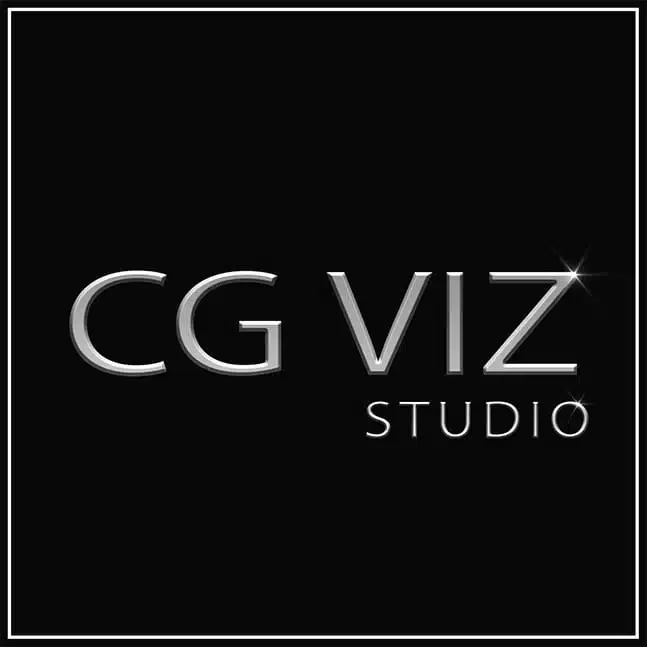
Question and Answer
This page provides help with the most common questions about CGI, our studio and the process in general. Just click on the section and find the answer. Also, we added a base 3D rendering and modeling glossary to give you a hand in deciding what services to choose for your project. Feel free to contact us via chat or send an email if you have any more questions left.
Frequently Asked Questions About Our 3D Visualization Services
At CG VIZ Studio, we understand you might have questions about our 3D visualization services. We have compiled a list of frequently asked questions to help you understand our services better.
Contact Us and fill out the necessary information/brief of your project & let us know what your needs are, the type of your project, the number of 3D Renders or the length of 3D Animation you need. To fill the info Click here
Any information you have on the project is helpful. If you have 3D files, elevations, landscape/lighting plans, and finishes, you are in great shape! If you just have hand-drawn floor plans, mood boards or rough design sketches, that’s fine, too! We can work off of just about anything, but the more information you can provide, the better we can understand your 3D Visualization needs. Generally, we prefer
Yes! We offer our 3D Visualization service worldwide. We have a great presence in USA, many parts of Europe & Asian countries such as India, China, Japan etc. All communication, in relation to the project are conducted via Internet. Briefings, project management & delivery can be initiated virtually from anywhere with ease.
We follow non-disclosure norms with strict adherence. We also sign Non-Disclosure Agreements with firms on request and all our employees. Utmost security and precaution are employed in ensuring data protection, and we take whatever means necessary to protect the secrecy and sanctity of data, images, and information that are the properties of our clients.
All official communication must be done via email for the record. However, you can also reach us via Skype, WhatsApp, Line, WeChat, etc. We can also hold online meetings where we can share screens using Skype, Zoom, GoToMeeting, Bluejeans, Webex, or whatever you prefer. You can also call our mobiles directly. Anyway, there is no gap between us!
Our pricing is very simple however this question seems to be the hardest everytime as to give an accurate ans to this question, we will need a brief about the project itself. Each project is vastly different from one another. So, prices vary a lot depending on the project scope, level of customization and the technical complexity of the task required to complete the project. Our quotations are mainly based on the scope of defined project and our clients requirements. We can provide you a ballpark estimate after knowing your initial brief. You will receive our feedback within 24hr for the estimate.
We can accept most file types like .MAX, .SKP, . FBX, .OBJ, .3DS, .3DM, .RVT, .STL, . DAE, & .DWG are all great.
Absolutely ! We only do final render once you approve the final draft. We care very deeply about the final quality of work you will receive from us and we make sure that it matches your expectations. We will send draft at the end of every stages. The following stages are as follows:
1. 3D Modelling Stage – We make sure that we have 3D Modelled the correct 3D Model according to the information you sent us & we are looking from the right camera angle for which we have to do final render.
2. Rendering Stage – After approving the 3D Model, we move forward with texturing and lighting the scene and send you draft render to keep you updated in the process.
3. Revision Stage – All the revisions pointed by you fixed and excuted is shared with you to confirm before moving to final render.
4. Final 3D Render – Final 4k High – Resolution Render is executed & shared.
Yes ! You are absolutely right. We can model anything from scratch but most of the clients already have 3D Models in various formats such as .MAX .FBX .OBJ .MB Revit, .SKP, Rhino etc. But due to the different 3D applications compatibility issues, all the 3D files cannot be used directly. They might a bit of fine tuning and fixing or are sometimes are completely useless and we will need to model from scratch anyway.
Depending on what we receive is usable or not, the price will be excluded or not. If not full, we will definitely offer a great discount.
We are mostly 24*6. We always respect client’s working hour habit so, we usually setup communication with our clients at the time frame they feel comfortable in. Our sunday are usually off but if anything is urgent, we will be available for the communication on prior request.
Just like the cost, this is usually estimated after defining the full project scope. The delivery time will depend on various factors such as the complexity of the project, the number/length/scale of images/video etc to be produced.
3D Rendering Service glossary
In 3D computer graphics, the process of creating virtual 3D objects in any 3D software like Autodesk 3DS Max, Autodesk Maya, Blender, etc is called 3D Modelling. A 3D artist can create a 3D model completely by imagination, or referencing any real-world objects or living thing, or create accurate real-world architecture but using 2D architectural drawings.
The process of generating three-dimensional videos in a digital environment. To create a 3D animation, 3D artists carefully manipulate 3D objects within 3D software for exporting sequences of still images. These CG pictures are then used together to create the illusion of movement in a 3D animation.
In exterior 3D Rendering, a 3D artist creates exteriors of any architecture usually using architectural drawings created by an architect and renders them with surrounding to visualize how the final architecture would look. This can also give a sense of scale to the architecture along with the surroundings and the images created by 3D exterior rendering can also be used for marketing purposes.
There can be different approaches to do interior rendering but the following steps are followed almost every time:
- 3D modeling: In this step, we create 3D models and set up the 3D scene of the interior usually using architectural drawings created by an architect.
- Texturing and Shading: In this step, we need to apply texture to the 3D models and shaders to define the look of an object for example wood, marble, glass, etc.
- Lighting: Now we need to illuminate the interior to be visible according to the theme of the interior for example natural daylight, or artificial interior lights.
- Rendering: Finally we create a still image or sequence of images if there is an animation in the scene. This will create final images by calculating the texture and color of the objects and lighting in the scene.
We provide Ultra HD 4K renders for ultra high definition images. We give you a high 4000 × 2250 pixels quality image that will perfectly fit a wide-screen HDTV (16:9) for full-screen viewing and impressive presentation of your project.
3D rendering is the process of using a computer to generate a 2D image from a 3D Scene. The Rendered Images are generated based on the data a 3D Model or Scene holds such as color, texture, and shader of a certain 3D object in the 3D Scene. 3D Rendering is also often referred to as 3D Visualization. It is similar to a photography process but unlike photography, a 3D Artist has to build the whole scene in 3D using 3D software like Autodesk Maya & 3ds Max, etc. After that the 3D Artist does the lighting & scene staging & then Images are produced accordingly.
Interior 3D Rendering is a method of enhancing an image of interior space to make it more pleasing and functional for the people who use that space. It can be done by using photorealistic lighting and material in 3D models. The commonly used software is Autodesk 3DS Max, Autodesk Maya, Blender.
A 3D model of a CAD drawing to scale, showing a view from above, of the relationships between rooms, spaces, traffic patterns, and other physical features at one level of a structure.
There can be different approaches to do Exterior rendering but the following steps are followed almost every time:
- 3D modeling: In this step, we create 3D models and set up the 3D scene of the exterior usually using architectural drawings created by an architect.
- Texturing and Shading: In this step, we need to apply texture to the 3D models and shaders to define the look of an object for example wood, marble, glass, etc.
- Lighting: Now we need to illuminate the exterior to be visible according to the theme of the interior for example natural daylight, or evening artificial interior lights.
- Rendering: Finally we create a still image or sequence of images if there is an animation in the scene. This will create final images by calculating the texture and color of the objects and lighting in the scene.
Compositing a photo into a CGI scene or retouching a 3D render to achieve maximum realism. It usually consists of adding visual effects and contextual elements such as cars and people.
